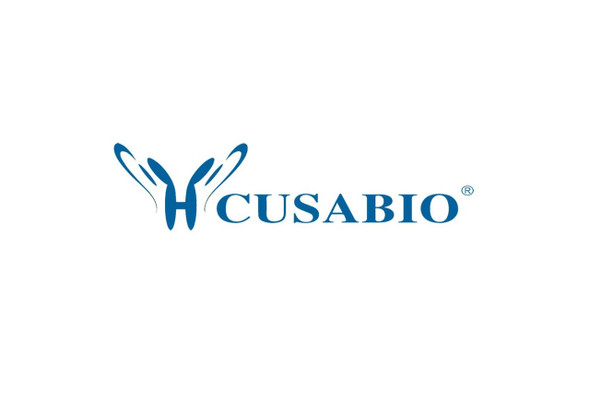Cusabio Human Recombinants
Recombinant Human COP9 signalosome complex subunit 2 (COPS2) | CSB-EP753713HU
- SKU:
- CSB-EP753713HU
- Availability:
- 13 - 23 Working Days
Description
Recombinant Human COP9 signalosome complex subunit 2 (COPS2) | CSB-EP753713HU | Cusabio
Alternative Name(s): Alien homolog
Gene Names: COPS2
Research Areas: Signal Transduction
Organism: Homo sapiens (Human)
AA Sequence: MSDMEDDFMCDDEEDYDLEYSEDSNSEPNVDLENQYYNSKALKEDDPKAALSSFQKVLELEGEKGEWGFKALKQMIKINFKLTNFPEMMNRYKQLLTYIRSAVTRNYSEKSINSILDYISTSKQMDLLQEFYETTLEALKDAKNDRLWFKTNTKLGKLYLEREEYGKLQKILRQLHQSCQTDDGEDDLKKGTQLLEIYALEIQMYTAQKNNKKLKALYEQSLHIKSAIPHPLIMGVIRECGGKMHLREGEFEKAHTDFFEAFKNYDESGSPRRTTCLKYLVLANMLMKSGINPFDSQEAKPYKNDPEILAMTNLVSAYQNNDITEFEKILKTNHSNIMDDPFIREHIEELLRNIRTQVLIKLIKPYTRIHIPFISKELNIDVADVESLLVQCILDNTIHGRIDQVNQLLELDHQKRGGARYTALDKWTNQLNSLNQAVVSKLA
Source: E.coli
Tag Info: N-terminal 6xHis-SUMO-tagged
Expression Region: 1-443aa
Sequence Info: Full Length
MW: 67.6 kDa
Purity: Greater than 90% as determined by SDS-PAGE.
Relevance: Essential component of the COP9 signalosome complex (CSN), a complex involved in various cellular and developmental processes. The CSN complex is an essential regulator of the ubiquitin (Ubl) conjugation pathway by mediating the deneddylation of the cullin subunits of SCF-type E3 ligase complexes, leading to decrease the Ubl ligase activity of SCF-type complexes such as SCF, CSA or DDB2. The complex is also involved in phosphorylation of p53/TP53, c-jun/JUN, IkappaBalpha/NFKBIA, ITPK1 and IRF8/ICSBP, possibly via its association with CK2 and PKD kinases. CSN-dependent phosphorylation of TP53 and JUN promotes and protects degradation by the Ubl system, respectively. Involved in early stage of neuronal differentiation via its interaction with NIF3L1.
Reference: "A novel protein complex involved in signal transduction possessing similarities to 26S proteasome subunits."Seeger M., Kraft R., Ferrell K., Bech-Otschir D., Dumdey R., Schade R., Gordon C., Naumann M., Dubiel W.FASEB J. 12:469-478(1998)
Storage: The shelf life is related to many factors, storage state, buffer ingredients, storage temperature and the stability of the protein itself. Generally, the shelf life of liquid form is 6 months at -20?/-80?. The shelf life of lyophilized form is 12 months at -20?/-80?.
Notes: Repeated freezing and thawing is not recommended. Store working aliquots at 4? for up to one week.
Function: Essential component of the COP9 signalosome complex (CSN), a complex involved in various cellular and developmental processes. The CSN complex is an essential regulator of the ubiquitin (Ubl) conjugation pathway by mediating the deneddylation of the cullin subunits of SCF-type E3 ligase complexes, leading to decrease the Ubl ligase activity of SCF-type complexes such as SCF, CSA or DDB2. The complex is also involved in phosphorylation of p53/TP53, c-jun/JUN, IkappaBalpha/NFKBIA, ITPK1 and IRF8/ICSBP, possibly via its association with CK2 and PKD kinases. CSN-dependent phosphorylation of TP53 and JUN promotes and protects degradation by the Ubl system, respectively. Involved in early stage of neuronal differentiation via its interaction with NIF3L1.
Involvement in disease:
Subcellular Location: Cytoplasm, Nucleus
Protein Families: CSN2 family
Tissue Specificity:
Paythway:
Form: Liquid or Lyophilized powder
Buffer: If the delivery form is liquid, the default storage buffer is Tris/PBS-based buffer, 5%-50% glycerol. If the delivery form is lyophilized powder, the buffer before lyophilization is Tris/PBS-based buffer, 6% Trehalose, pH 8.0.
Reconstitution: We recommend that this vial be briefly centrifuged prior to opening to bring the contents to the bottom. Please reconstitute protein in deionized sterile water to a concentration of 0.1-1.0 mg/mL.We recommend to add 5-50% of glycerol (final concentration) and aliquot for long-term storage at -20?/-80?. Our default final concentration of glycerol is 50%. Customers could use it as reference.
Uniprot ID: P61201
HGNC Database Link: HGNC
UniGene Database Link: UniGene
KEGG Database Link: KEGG
STRING Database Link: STRING
OMIM Database Link: OMIM









